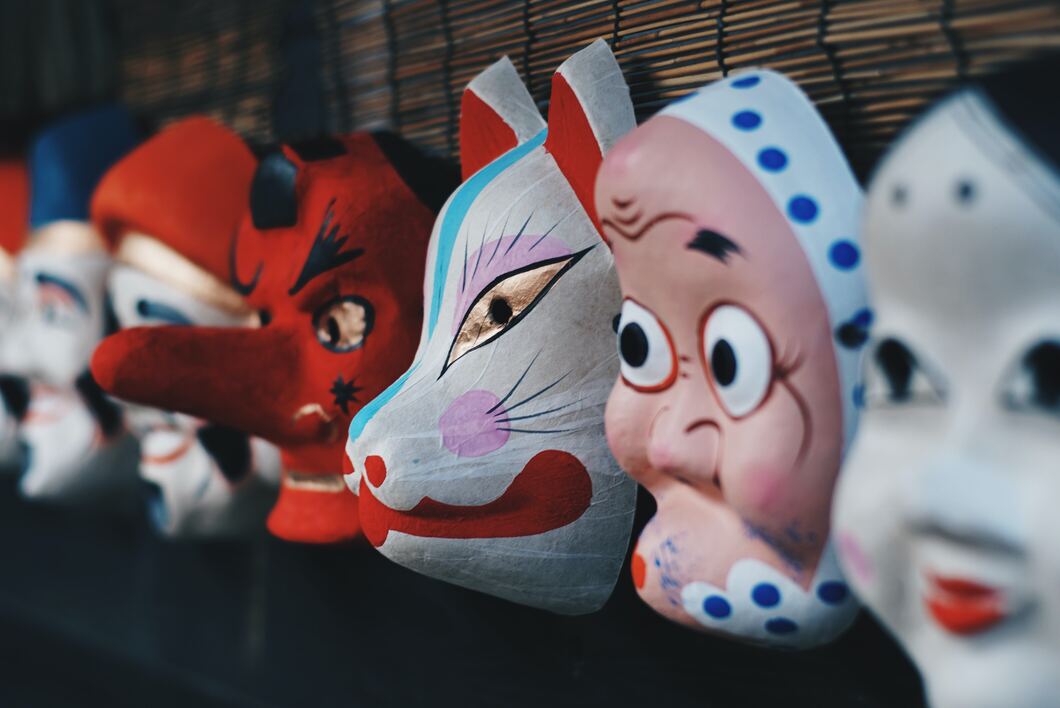Introduction
Understanding how consumers behave in Japan is key to successfully entering this market. Japanese consumer behavior is influenced by a unique set of cultural values, demographics, and lifestyle factors that shape purchasing decisions in ways that may surprise you.
Cracking the code on what makes Japanese consumers tick and how they evaluate brands and products is essential if you want to win them over.
This blog will give you insights into the psychology behind why Japanese consumers buy what they buy.
You'll get a glimpse into how traditional values blend with contemporary lifestyle influences, how new technologies are impacting shopping habits, and how brands can build loyalty in this market.
How Cultural Values Influence Purchasing Decisions
Understanding how cultural values influence purchasing decisions is key to success in Japan.
Some of the most important factors to consider:
- Group mentality: In Japan, the group is valued over the individual. People tend to make buying decisions based on what will benefit or fit in with the group they identify with. Brands that tap into this group-first mindset tend to be more popular.
- Loyalty and long-term thinking: Japanese consumers tend to be very loyal to brands and companies they trust. They value long-term relationships and stability. If you can build brand loyalty, you'll have customers for life in Japan.
- High quality and attention to detail: Japanese shoppers expect high quality, excellent craftsmanship, and exceptional product or service. They are willing to pay more for products and experiences that meet these high standards. If you can't provide top-notch quality and service, you won't get far in Japan.
- Politeness and respect: Courtesy and politeness are essential in Japanese interactions. Businesses should always be respectful and display good manners to win the trust of Japanese consumers.
- Consensus and conformity: Japanese society emphasizes harmony, consensus, and conformity. People want to fit in and avoid standing out or causing inconvenience for others. Brands and products seen as mainstream, modest, and not flashy tend to do better.
- Wrapping and presentation: The Japanese pay a lot of attention to wrapping, presentation, and customer experience. Nice packaging, a pleasant shopping environment and special wrapping of gifts are all appreciated. Make the experience of purchasing and receiving your product memorable.
Understanding these cultural values and priorities of politeness, quality, consensus, and experience can help brands better connect with Japanese consumers.
Adjusting marketing messages and product offerings to align with these values is key to success in this market.
Demographic Trends Shaping Consumer Behavior in Japan

In addition to cultural factors, demographic trends are also shaping consumer behavior in Japan. Here are some key trends to consider:
- Aging population: Japan has one of the world's oldest populations. With an increasingly aging society, the demand for products and services catering to seniors is on the rise.
- Declining birthrate: The birthrate in Japan has been steadily declining, leading to a smaller, younger population. As a result, businesses targeting younger consumers may face challenges in the Japanese market.
- Urban concentration: The majority of the Japanese population lives in urban areas, with Tokyo being the most populous city. Businesses targeting consumers in Japan should focus on urban markets to reach a larger audience.
- Women's economic empowerment: As more Japanese women enter the workforce and gain financial independence, they have more purchasing power and influence over household decisions. Businesses should consider the preferences of working women when developing products and services for the Japanese market.
The Importance of Trust and Loyalty
To successfully enter the Japanese market, you need to understand how much trust and loyalty factor into consumer behavior in Japan.
- Japanese consumers tend to be very loyal to brands they know and trust. They often stick with the same trusted brands for life. This means that breaking into the market and gaining the trust and loyalty of consumers can take a long time.
- Trust is built through high quality, reliability, and customer service. If a brand delivers products and experiences that meet or exceed expectations time after time, trust will grow. But one misstep can destroy years of trust.
- Personal relationships and word-of-mouth are key. Japanese consumers rely heavily on recommendations from family and friends. They want to know that a brand is reputable and trustworthy before purchasing from them.
- Earning loyalty starts with understanding consumers' needs and values. Then demonstrate through actions - not just words - that you share those values and are committed to serving consumers in ethical, empathetic ways. Over time, as trust builds, loyalty will follow.
- Patience and consistency are required. Don't expect to earn trust and loyalty overnight. Stay focused on quality, service, transparency, and integrity. Respect consumers and build real relationships. With time and dedication, Japanese consumers can become your most loyal advocates and supporters.
Gaining the trust and loyalty of Japanese consumers is challenging but rewarding. With the right mindset and commitment to quality, service, and social values, brands can establish meaningful, long-term relationships with this sophisticated market.
The key is patience, sincerity and consistently delivering on promises and expectations. Do that, and Japanese consumers' trust and loyalty will be yours.
Shopping Trends: From Department Stores to E-Commerce

Japan's shopping trends have evolved rapidly over the past few decades. Department stores were once the primary shopping destination, but now e-commerce has taken over.
The Rise of E-Commerce
E-commerce has exploded in Japan, with many shoppers preferring to buy goods online rather than visiting physical stores. Over 70% of Japan's population shops online.
Major e-commerce sites like Rakuten and Yahoo Shopping are popular, as well as clothing and specialty sites like Zozotown, Start Today, and FashionWalker.
Cashless Payments
Cash was king in Japan for years, but now electronic and mobile payments reign. Apps like PayPay, Merpay, and Rakuten Pay make it easy to pay with your smartphone.
Contactless credit cards have also gained mainstream adoption. Going cashless is convenient and efficient, appealing to Japan's pragmatic culture.
Social Commerce
Social media plays an integral role in Japan's e-commerce. Platforms like LINE, Twitter, and Instagram are used to discover products, follow brands, and make purchases directly within the apps.
Influencer marketing is common, with brands collaborating with social media influencers to promote their products to engaged followers.
Curated Subscriptions
Subscription services that offer curated products are popular, especially with younger consumers. Everything from snacks and cosmetics to clothing and hobbies can be subscribed to.
These services are convenient while allowing people to discover new products that match their interests. Popular subscription sites include Dokodemo Gurume, Tokyo Treat, and AirCloset.
While e-commerce and technology have significantly impacted Japan's shopping landscape, many traditional elements remain.
Department stores and physical retail outlets continue to thrive. And cash, though declining, is still commonly used, especially for small purchases.
Blending modern and traditional, digital and in-person, social and solitary—this merging of opposites characterizes consumption in Japan.
Product Preferences: High Quality and Innovation

The Japanese consumer values high-quality, innovative products. They are willing to pay more for items they perceive as premium.
High-Quality Goods
Japanese shoppers associate high price tags with high quality. They expect products to be well-made, detailed, and durable. If you want to successfully sell in Japan, focus on:
- Premium, natural materials. High-quality textiles, leathers, woods, etc.
- Impeccable craftsmanship. Precise stitching, seamless joins, symmetrical forms.
- Minimal imperfections. Scratches, dents, chips, and other flaws are unacceptable.
- Luxurious packaging. Elegant wrappings, bags, and containers signal a premium product.
Cutting-Edge Innovation
The Japanese also value innovative, technologically advanced goods. New features, the latest models, and futuristic designs are appealing. Some examples:
- Robotics. From robot vacuums to robot pets, the Japanese consumer embraces robotics.
- VR and wearable tech. Virtual reality gear, smart watches, fitness trackers, etc. are popular.
- Eco-friendly products. Innovations that are energy efficient, sustainable, and environmentally friendly.
- Mobile and digital. The latest smartphones, streaming media devices, and other high-tech gadgets.
To succeed in Japan, focus on creating or selling products that push boundaries. Combine cutting-edge tech with a simple, minimalistic design. Eco-friendly and sustainable products also strongly appeal to the innovation-minded Japanese consumer.
Tips for Efficiently Targeting Japanese Customers
To successfully market your products in Japan, you need to understand what makes Japanese consumers tick. Here are some tips to help you effectively target this audience:
Research the Market and Consumers
Thoroughly research the Japanese market, consumer behavior, and cultural aspects to create a solid marketing strategy.
Understand the importance of localization
Localization is considered a key element to success in Japan market. Tailor your products, services, and marketing efforts to Japan's specific needs, preferences, and cultural factors.
Focus on Quality and Detail
Japanese customers value high-quality, detailed products. Pay close attention to the materials and craftsmanship. Highlight premium features and specifications in your marketing to appeal to the Japanese market.
Provide Superior Service
Japanese consumers expect a high level of customer service. Invest in training your staff thoroughly and empower them to make decisions that benefit the customer. Be available to quickly and courteously respond to any questions or concerns from customers.
Build Long-Term Relationships
Japanese business culture is based on building strong, long-lasting relationships. Take the time to connect with your customers and show interest in them. Loyal, repeat customers will become your greatest advocates and supporters. Offer loyalty programs and personalized experiences to strengthen these bonds over time.
Appeal to Collectors
Many Japanese consumers enjoy collecting limited edition or scarce products. Release special edition products or limited quantities to tap into this interest. Offer exclusive access or experiences for dedicated customers and collectors.
Leverage local influencers
Japanese consumers often rely on influencers and word-of-mouth recommendations to make purchasing decisions.
Collaborate with local influencers to promote your products and raise brand awareness.
Utilize automation tools like Sanka
To effectively execute consumer behavior research and marketing efforts in Japan, consider using intelligent automation tools like Sanka.
Sanka can help you gather valuable insights, manage marketing campaigns, and save time and resources.
Case Study: How Businesses Successfully Entered the Japanese Market

Starbucks
Starbucks is an excellent example of a business that successfully entered the Japanese market by understanding and adapting to local consumer behavior. The company opened its first store in Tokyo in 1996 and now has more than 1,400 locations across Japan.
Starbucks achieved success in Japan by:
- Localizing its menu, offering unique items like matcha green tea lattes and sakura-themed drinks that cater to Japanese tastes
- Incorporating traditional Japanese design elements into its stores, such as tatami mats and shoji screens
- Emphasizing its commitment to quality and craftsmanship, which resonates with Japanese consumers
- Providing exceptional customer service, including the use of polite language and gestures
IKEA
IKEA, the Swedish furniture retailer, entered the Japanese market in 2006 and has since expanded to nine locations across the country. IKEA's success in Japan can be attributed to:
- Adapting its product offerings to suit Japanese homes, which are typically smaller and have unique design features such as tatami rooms
- Offering affordable, stylish, and functional furniture that appeals to Japanese consumers' desire for quality and value
- Providing a unique shopping experience that includes a restaurant serving Swedish and Japanese cuisine
- Utilizing extensive market research to understand Japanese consumers' preferences and needs
Disney
Disney has achieved great success in Japan, with Tokyo Disneyland and Tokyo DisneySea being among the most popular theme parks in the world. Disney's success in Japan can be attributed to:
- Creating a unique, immersive experience that blends Disney's storytelling and characters with Japanese culture and aesthetics
- Offering a high level of customer service that meets the expectations of Japanese consumers
- Localizing its marketing efforts, including the use of popular Japanese celebrities and influencers for promotions and advertising
- Continuously investing in new attractions and experiences to keep the parks fresh and exciting for visitors
Conclusion
In summary, understanding consumer behavior in Japan is crucial for businesses looking to succeed in this unique market.
By considering cultural and demographic factors, tailoring products and services to local preferences, and leveraging automation tools like Sanka, businesses can effectively target Japanese consumers and achieve long-lasting success.








